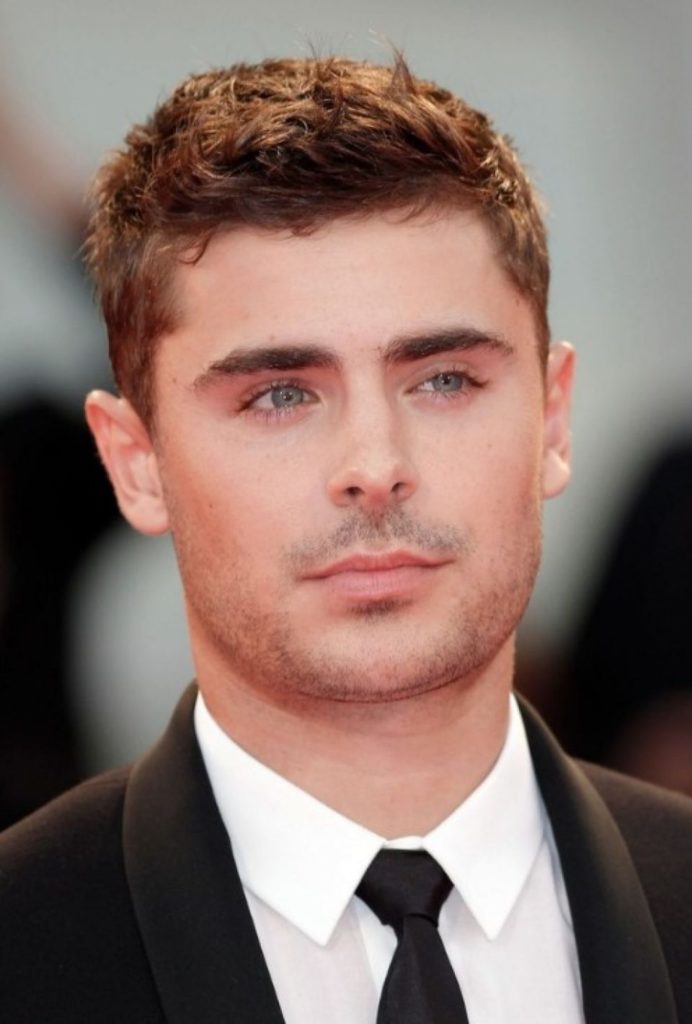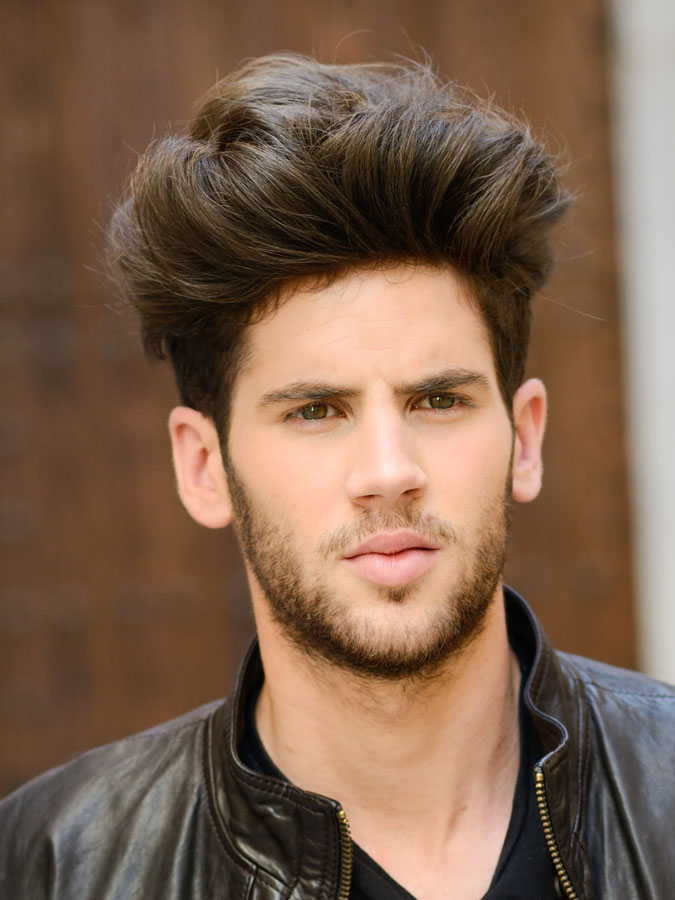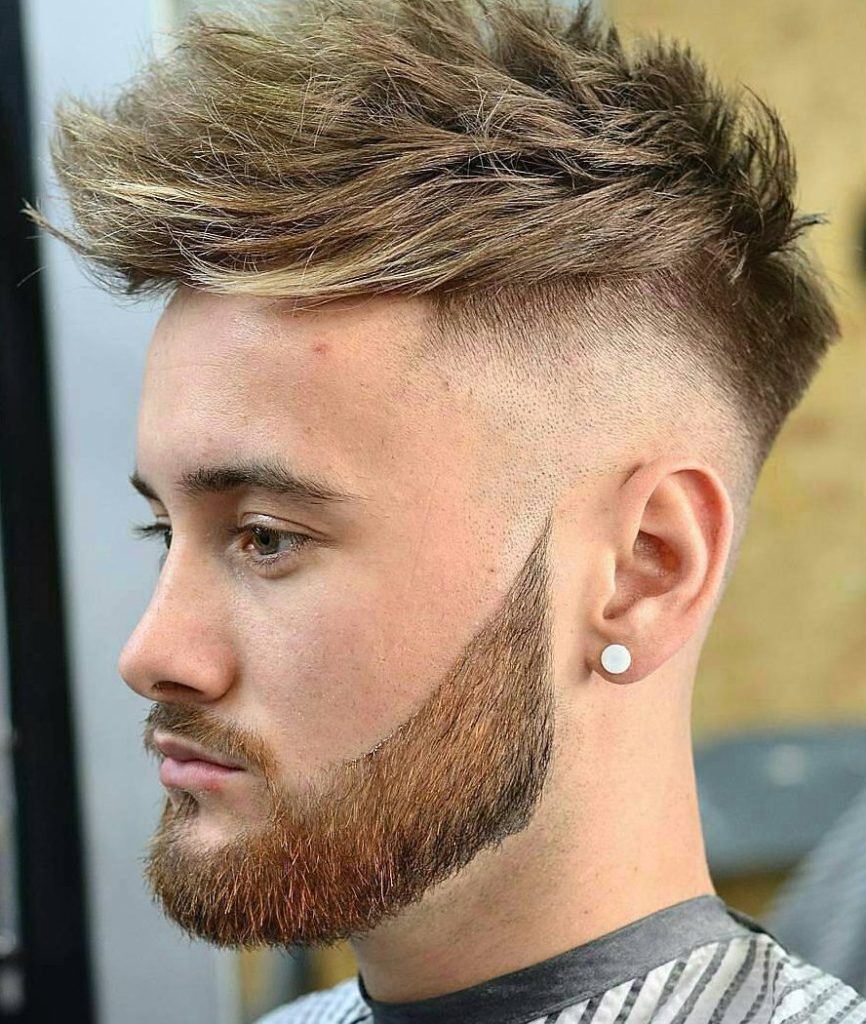Stylish Haircuts for Young Men

The realm of male grooming has witnessed a significant evolution, transforming from a mere necessity into a powerful statement of personal identity and confidence. For the younger demographic, the choice of a hairstyle transcends simple aesthetic preference; it becomes an integral component of self-expression, influencing perceptions in social, academic, and professional environments. A meticulously selected and expertly executed haircut possesses the capacity to enhance facial features, convey a specific persona, and significantly bolster an individual’s self-assurance. Understanding the myriad options available, alongside the foundational principles that guide an optimal selection, is paramount for cultivating a distinguished and contemporary appearance. This article delves into the diverse landscape of modern male hair aesthetics, offering comprehensive insights into its significance, selection criteria, popular variations, and essential maintenance practices.
The impact of a well-chosen hairstyle extends far beyond superficial appeal. It contributes to a polished presentation, which can be advantageous in various aspects of life, from initial social interactions to formal interviews. A carefully considered cut demonstrates attention to detail and a commitment to personal presentation, qualities often associated with discipline and professionalism. Furthermore, current trends in male grooming emphasize versatility, allowing for a dynamic range of looks that can be adapted to different occasions through styling variations. The ability to transition seamlessly from a casual, textured look to a more formal, slicked-back appearance highlights the adaptability inherent in many contemporary styles.
Key Factors Influencing Hairstyle Selection
Choosing an appropriate and flattering haircut involves a thoughtful consideration of several interconnected elements. Ignoring these fundamental principles can result in a style that does not complement an individual’s features or lifestyle.
-
Face Shape: This is arguably the most crucial factor. Different face shapes are best complemented by specific cuts that can either soften angular features, add definition to rounder ones, or balance overall proportions.
- Oval: Considered the ideal face shape, it suits a wide variety of styles, from short fades to longer, textured looks. Versatility is a key advantage for individuals with this shape.
- Round: Styles that add height and angularity on top, with shorter sides, help to elongate the face. Examples include the quiff, pompadour, or a textured crop with significant volume.
- Square: Strong, angular jawlines benefit from styles that soften edges or add height. Soft fades, side parts, or slightly longer, textured styles can work well.
- Long/Oblong: Cuts that add width to the sides and avoid excessive height on top are recommended to prevent further elongation. Side-swept fringes or styles with some bulk on the sides can be effective.
- Heart: Wider foreheads and narrower chins benefit from styles that balance the upper and lower halves. Longer, side-swept fringes or styles with volume at the sides can be flattering.
- Diamond: Characterized by wide cheekbones, a narrow forehead, and a narrow chin. Styles that add width to the forehead and chin areas, such as a fringe or a slightly longer, textured cut, are often suitable.
-
Hair Type and Texture: The natural characteristics of the hair play a significant role in how a particular cut will sit and hold its shape.
- Straight Hair: Offers clean lines and sharp definition, ideal for fades, side parts, and classic slick-back styles. It can also be styled for textured looks with the right products.
- Wavy Hair: Provides natural volume and movement, lending itself well to quiffs, longer textured cuts, and styles that embrace its natural flow.
- Curly Hair: Requires cuts that manage volume and define curls. Tapered sides with longer, defined curls on top, or a textured crop, are often excellent choices.
- Thick Hair: Can support voluminous Short Bob Hairstyles Korean An In Depth Exploration Of A Contemporary Hair Phenomenon styles like pompadours and quiffs but may require significant thinning to prevent excessive bulk.
- Thinning Hair: Benefits from shorter, textured cuts that create the illusion of density, such as a buzz cut, crew cut, or a short textured crop. Longer, wispy styles should generally be avoided.
- Lifestyle and Profession: Practicality and maintenance requirements are critical considerations. An individual’s daily routine, including work or academic commitments, physical activities, and personal time allocated for grooming, should influence the choice. A high-maintenance style requiring extensive daily styling may not be suitable for someone with a demanding schedule. Similarly, a very avant-garde cut might not align with a conservative professional environment.
- Personal Style and Trends: While understanding current trends is beneficial, the ultimate decision should resonate with an individual’s personal aesthetic and comfort level. A haircut should feel authentic and enhance personal expression, rather than merely conforming to fleeting fashion dictates. A professional stylist can assist in harmonizing personal preference with contemporary trends and suitability factors.
Popular Contemporary Hair Aesthetics
The current landscape of male hair fashion is rich with diversity, offering numerous compelling options that cater to various preferences and hair types.
-
The Fade Family: This category encompasses a vast array of options characterized by a gradual reduction in hair length from top to bottom.
- Low Fade: The shortest part of the fade begins just above the ear, offering a subtle transition.
- Mid Fade: The fade starts around the temple, providing a balanced and versatile look.
- High Fade: The shortest hair extends high up the sides and back of the head, creating a striking contrast with longer hair on top.
- Skin/Bald Fade: The hair on the sides and back is shaved down to the skin, offering the sharpest and most dramatic contrast.
Fades are exceptionally popular due to their clean appearance, versatility, and ability to pair with various lengths and styles on top, from textured crops to longer quiffs.
- The Undercut: Distinguished by a sharp, disconnected contrast where the hair on the sides and back is cut very short or shaved, while the hair on top is left significantly longer. This style offers a bold statement and allows for considerable styling flexibility, from slicked-back to voluminous quiffs.
- The Quiff: A timeless and adaptable style featuring longer hair on top, swept upwards and backward from the forehead to create volume. It offers a sophisticated yet modern appeal, with variations ranging from subtle to dramatic. The quiff can be adapted for various hair types and is a staple for those seeking an elegant, structured look.
- The Pompadour: A classic style renowned for its voluminous hair swept upwards and backward from the face, typically with shorter sides. Modern interpretations often combine the pompadour top with a fade or undercut, offering a contemporary twist on a vintage aesthetic. It exudes confidence and a sense of refined style.
- The Textured Crop: Characterized by short, choppy layers on top, often styled forward with a textured fringe. The sides are typically faded or tapered. This style is known for its low-maintenance appeal, modern edge, and ability to enhance natural hair texture, particularly for those with wavy or slightly curly hair.
- Slick Back/Side Part: These enduring styles offer a sense of classic sophistication. The slick back involves sweeping hair neatly backward from the forehead, often with a high-shine finish. The side part features hair parted distinctly on one side and combed smoothly. Both are excellent choices for formal settings and exude a mature, polished appearance.
- Longer Styles (e.g., Modern Shags, Flow): For individuals preferring more length, contemporary long hairstyles offer a relaxed yet intentional aesthetic. These often feature layers to add movement and prevent a heavy appearance, allowing hair to flow naturally or be tied back. Such styles convey a confident, artistic, or free-spirited persona.
Maintenance and Styling
Maintaining the integrity and appeal of any chosen haircut necessitates regular trims and appropriate styling practices. The frequency of trims typically ranges from every 2-4 weeks, depending on the specific style and desired sharpness, especially for fades and shorter cuts. Longer styles may tolerate Short Hairstyles For Over Round Face A Comprehensive Guide To Flattering Cuts slightly longer intervals.
The use of quality hair products is indispensable for achieving and maintaining the desired look. These include:
- Shampoos and Conditioners: Formulated for specific hair types, ensuring cleanliness and health.
- Styling Products: Pomades, waxes, gels, clays, and creams offer varying levels of hold, shine, and texture. Selecting the correct product is crucial for achieving the intended finish – whether a matte, textured look or a high-shine, slick appearance.
- Heat Protectants: Essential for those who frequently use blow dryers or other heat styling tools to prevent damage.
Mastering basic styling techniques, often demonstrated by a professional barber or stylist, empowers individuals to recreate their preferred look daily. This includes understanding how to blow-dry for volume, apply products evenly, and manipulate hair to achieve specific textures or directions.
FAQs by Stylish Haircuts for Young Men
Q1: How frequently should a professional haircut be obtained to maintain an optimal appearance?
A1: The ideal frequency for professional trims typically ranges from every two to four weeks. Shorter styles, especially those incorporating fades or sharp lines, often require more frequent maintenance to preserve their precision and shape. Longer styles may permit slightly extended intervals between appointments.
Q2: What are common errors to avoid when selecting a new haircut?
A2: Common errors include neglecting to consider one’s face shape and hair type, choosing a style solely based on current trends without assessing personal suitability, and failing to communicate clearly with the barber or stylist about desired outcomes and lifestyle considerations. Disregarding maintenance requirements is another frequent oversight.
Q3: Are there universal hairstyles that complement all hair types?
A3: While some styles exhibit greater adaptability, very few can be universally applied with equal success across all hair types. Specific textures—such as very curly, fine, or exceptionally thick hair—often require tailored approaches and specific cuts that work in harmony with their natural characteristics. Consulting a professional is advisable for personalized recommendations.
Q4: What is the significance of using appropriate hair products?
A4: Hair products are crucial for achieving and sustaining the intended aesthetic of a haircut. They provide hold, enhance texture, add shine or a matte finish, and protect hair from environmental factors or styling damage. The correct product selection is paramount for maximizing a style’s potential and maintaining hair health.
Tips by Stylish Haircuts for Young Men
- Consult a Professional: Engage in a thorough consultation with a skilled barber or stylist. Their expertise in face shapes, hair types, and current trends is invaluable for selecting a truly complementary and contemporary style.
- Consider Maintenance: Evaluate the time and effort required for daily styling and regular trims. Choose a haircut that aligns with an individual’s lifestyle and commitment to grooming.
- Experiment with Products: Explore various styling products—pomades, clays, waxes, Natural Hairstyles After Washing Your Hair Embracing Intrinsic Texture And Optimal Health gels—to discover which ones best achieve the desired texture, hold, and finish for the chosen haircut.
- Prioritize Hair Health: Implement a consistent hair care routine involving appropriate shampoos, conditioners, and occasional treatments. Healthy hair is more manageable and contributes significantly to the overall aesthetic of any haircut.
- Utilize Reference Photos: Bring visual examples of desired styles to appointments. This provides the stylist with a clear understanding of expectations and helps bridge any communication gaps.
- Understand Natural Growth: Observe and comprehend the hair’s natural growth patterns and cowlicks. Working with these rather than against them often results in a more harmonious and easily manageable style.
Conclusion by Stylish Haircuts for Young Men
The deliberate selection and meticulous maintenance of a contemporary haircut are fundamental to personal presentation and self-assurance for young men. The right style serves as a powerful instrument of self-expression, enhancing natural features and projecting an intended image. Through careful consideration of face shape, hair type, lifestyle, and a willingness to consult with professional stylists, individuals can navigate the diverse landscape of modern male grooming to achieve an aesthetic that is both fashionable and profoundly personal. The evolving nature of male hair aesthetics underscores the ongoing importance of informed choices and consistent care in cultivating a distinguished and confident persona.







More suggestion: Best Hairstyles For Thin Fine Hair Men Mastering Volume And Style